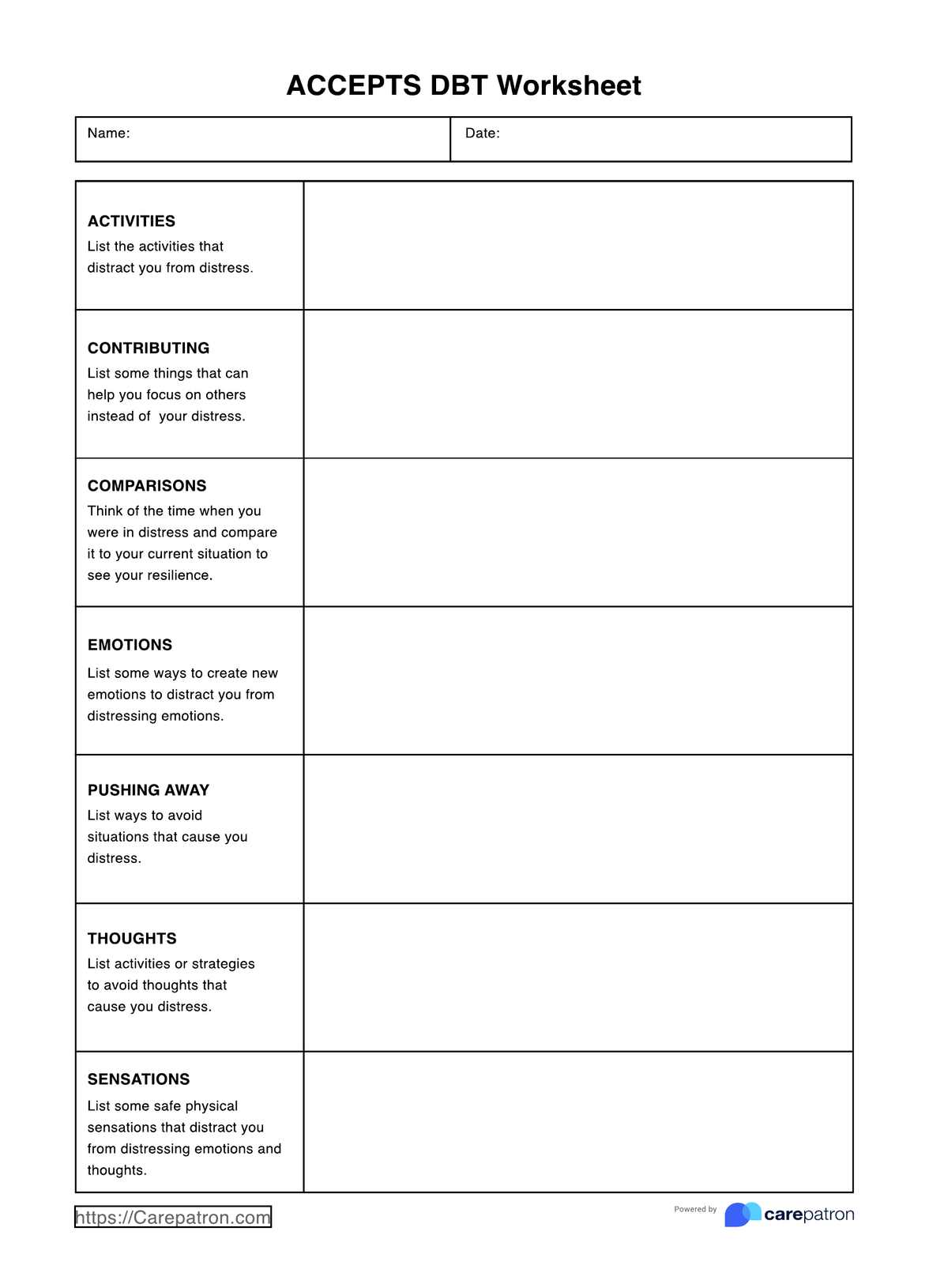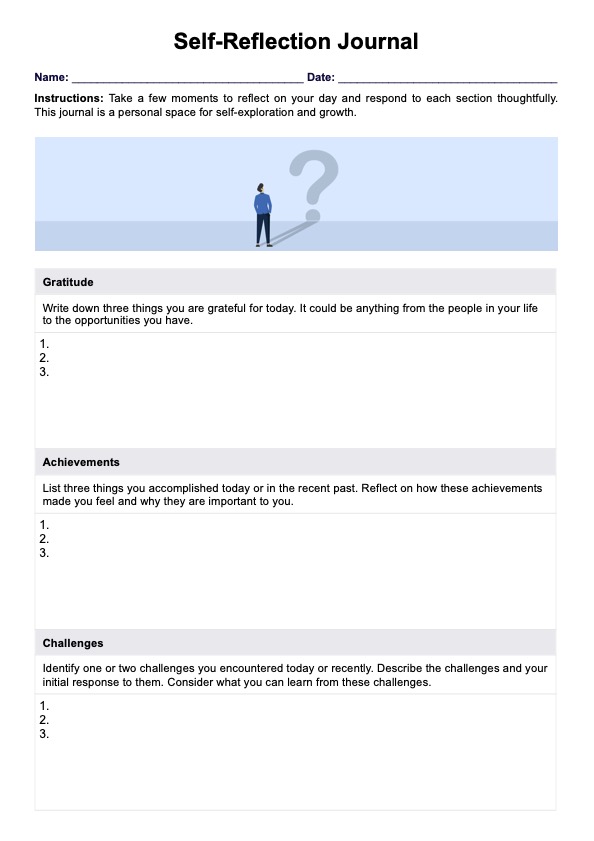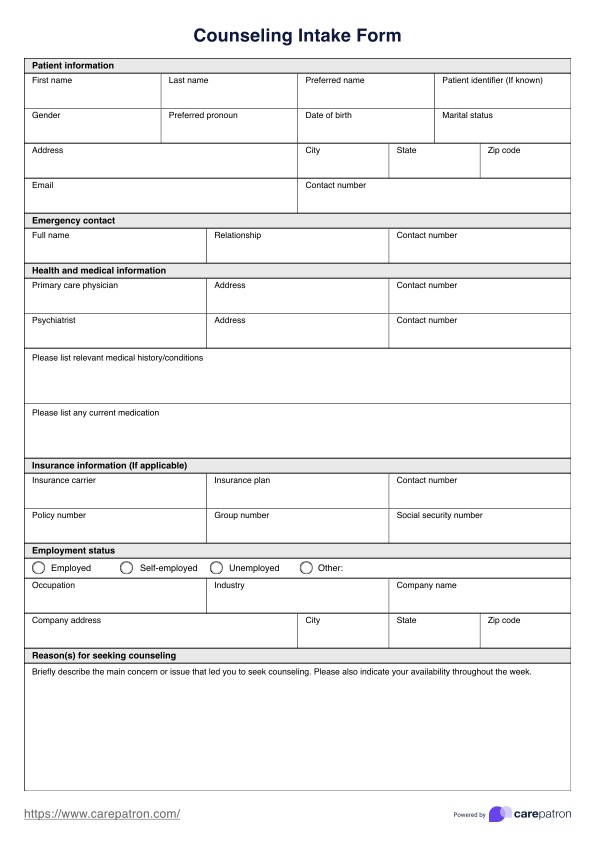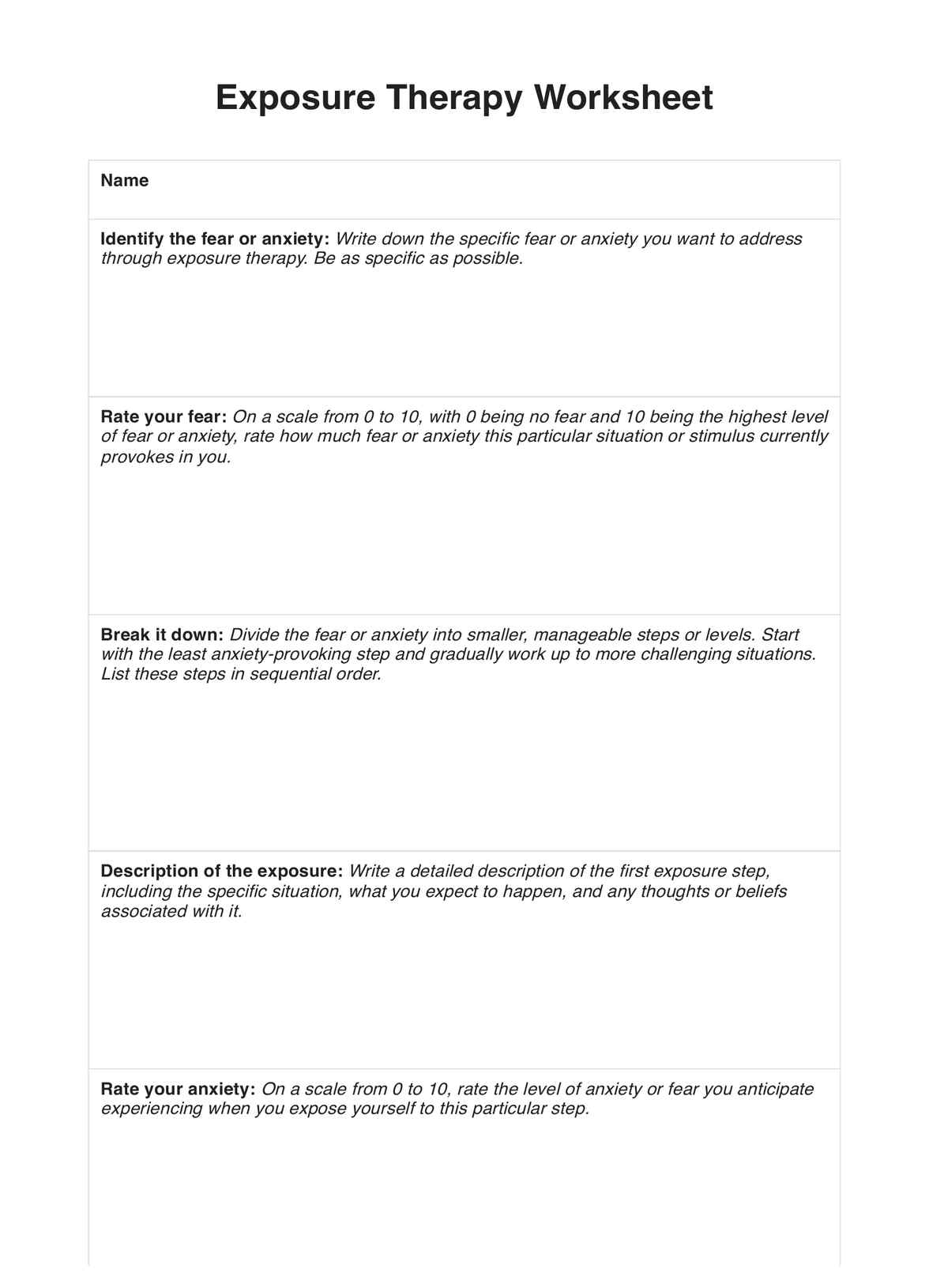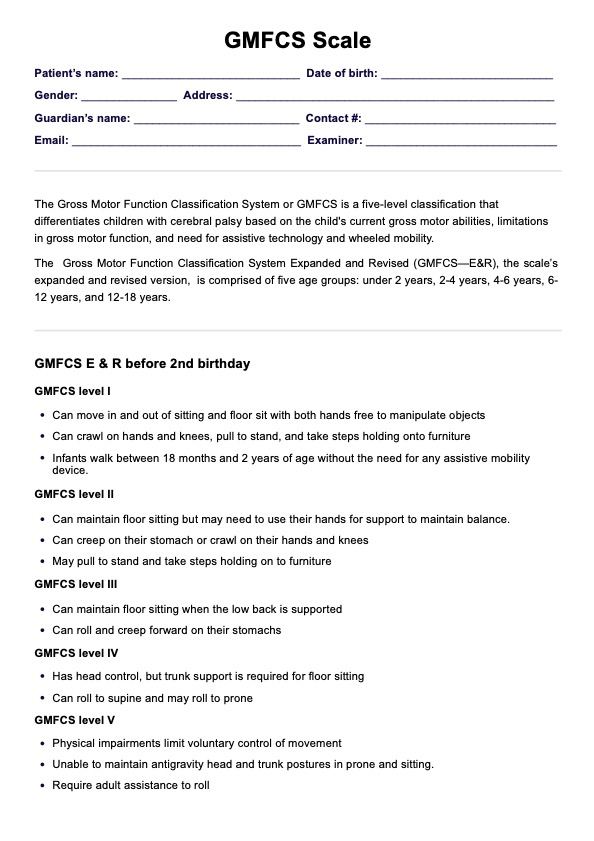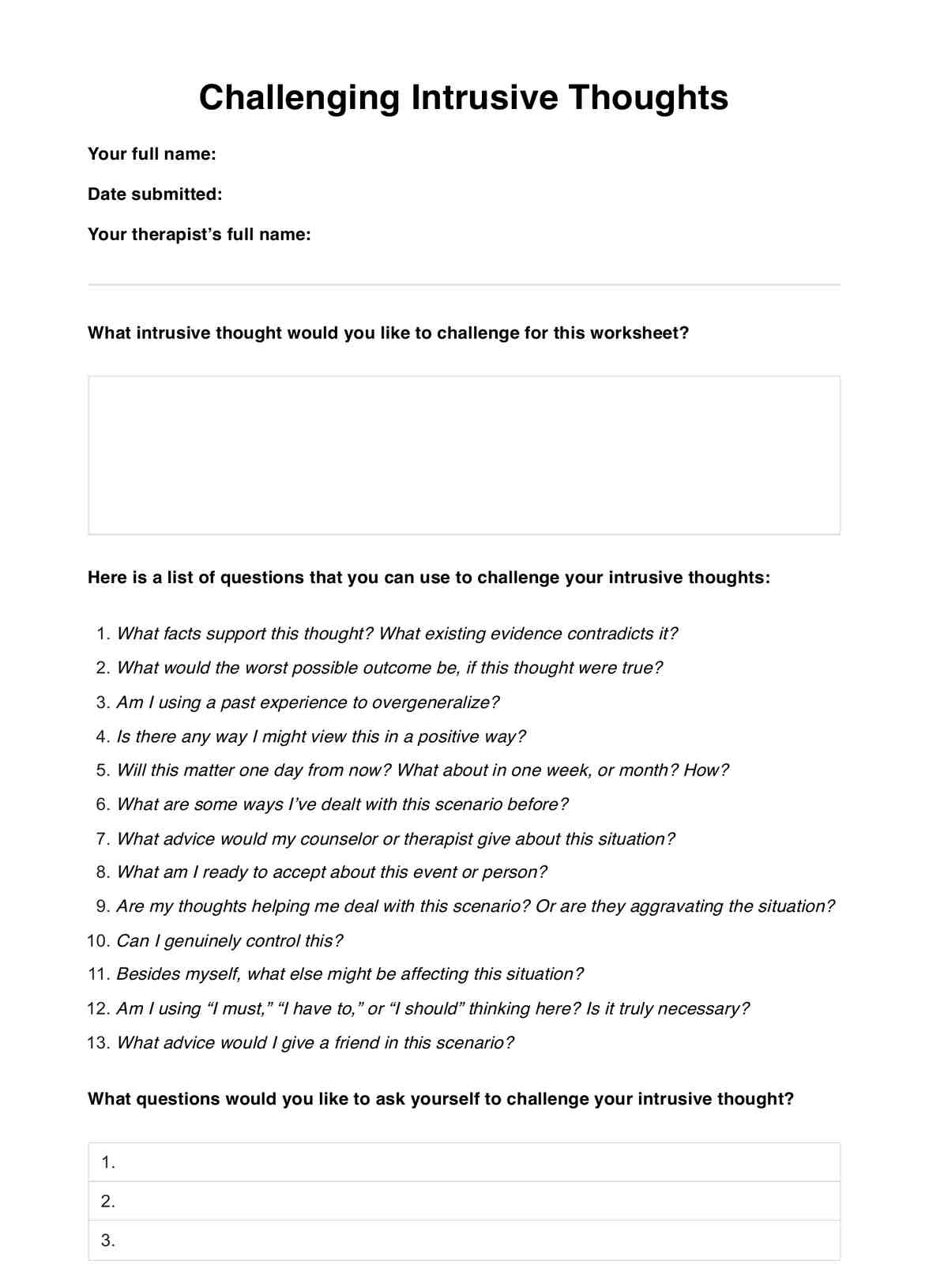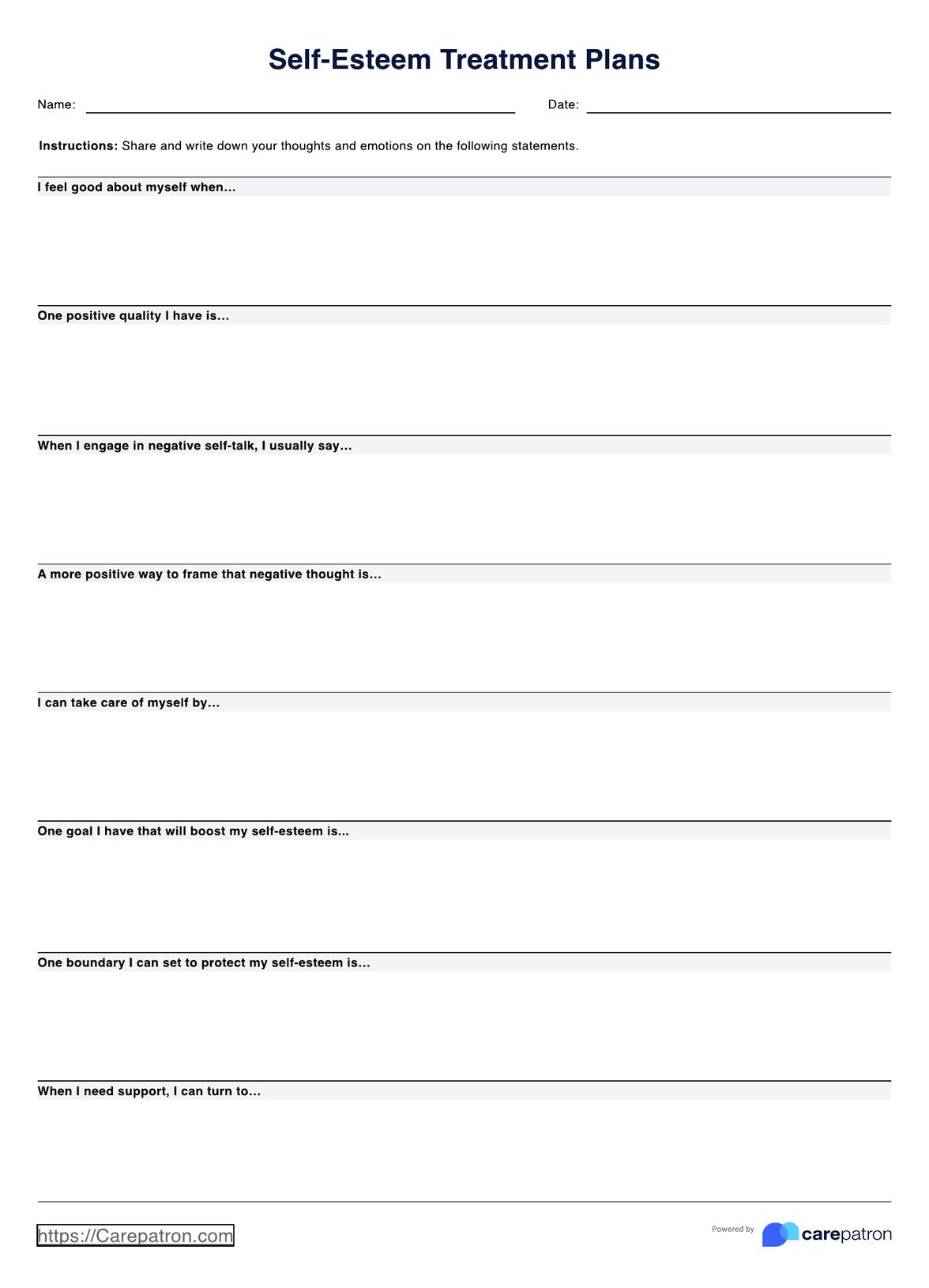Disruptive Mood Dysregulation Disorder Treatment Plan
Unlock efficient anxiety care with Carepatron's software, featuring patient management tools, secure communication, and streamlined billing.


What is anxiety?
Anxiety is a natural stress response characterized by feelings of fear, dread, and uneasiness. It can affect anyone and manifest through both physical and psychological symptoms. Understanding anxiety is the first step towards managing it effectively.
Anxiety manifests through a spectrum of symptoms that encompass psychological and physical aspects, creating a state of persistent worry and fear that goes beyond normal stress responses. Key symptoms include excessive worry about everyday matters, which is disproportionate to the actual situation and difficult to control. Restlessness or feeling on edge is common, as is difficulty concentrating or feeling like the mind goes blank.
Muscle tension is another hallmark symptom, often resulting in physical discomfort and contributing to difficulty relaxing. Sleep disturbances, including trouble falling or staying asleep, are prevalent among those with anxiety, further exacerbating feelings of tiredness and stress. Recognizing these signs is crucial for understanding when to seek help for effective treatment and management of anxiety disorders.
Disruptive Mood Dysregulation Disorder Treatment Plan Template
Disruptive Mood Dysregulation Disorder Treatment Plan Example
Common causes of anxiety
Anxiety disorders arise from a complex interplay of factors, making their exact cause multifaceted and varied across individuals.
- Genetics plays a significant role, as having a family history of anxiety increases one's risk of developing a disorder, suggesting a hereditary component.
- Environmental factors, such as experiencing stressful or traumatic events, can trigger the onset of anxiety disorders. These events might include childhood abuse, the death of a loved one, or surviving a natural disaster.
- Psychological factors, including personality traits like high levels of neuroticism, can predispose individuals to anxiety disorders.
- Underlying health issues, such as chronic illness or hormonal imbalances, can also contribute to or exacerbate anxiety symptoms.
Understanding these causes is essential for identifying effective treatment strategies and providing targeted support to those affected by anxiety disorders.
Types of anxiety disorder
Anxiety disorders encompass a range of conditions that share the common feature of excessive fear or worry that interferes with daily life:
Generalized anxiety disorder (GAD)
GAD is characterized by persistent and excessive worry about various topics, events, or activities, such as health, work, social interactions, and everyday life circumstances. Individuals with GAD find it difficult to control their worry and may experience physical symptoms like restlessness, fatigue, muscle tension, and sleep disturbances. The worry and anxiety are more severe than the normal anxiety people experience day to day and can last for six months or more.
Social anxiety disorder
Social Anxiety Disorder, also known as social phobia, involves an intense fear of social situations where one might be scrutinized or judged by others. This fear can significantly impair one's ability to function in daily life, affecting work, school, and other social interactions. Individuals may worry about acting or appearing visibly anxious (e.g., blushing, stumbling over words) and being viewed as stupid, awkward, or boring. They may avoid social situations altogether to prevent this embarrassment.
Panic disorder
Panic Disorder is marked by sudden, intense episodes of fear or discomfort, often peaking within minutes. These panic attacks are accompanied by physical symptoms such as heart palpitations, sweating, trembling, shortness of breath, feelings of impending doom, or fear of losing control. The unpredictability of panic attacks can lead individuals to avoid places or situations where they have previously occurred, significantly impacting their lives.
Separation anxiety disorder
Traditionally thought only to affect children, Separation Anxiety Disorder can also be diagnosed in adults. It's characterized by excessive fear or anxiety about being parted from those to whom an individual is attached. The fear is beyond what is appropriate for the person's age, causing significant distress or problems functioning. Symptoms might include persistent worry about losing the person close to them, distress when anticipating or experiencing separation, and reluctance to be away from loved ones.
Each of these anxiety disorders has distinct features, but they all share the common thread of excessive fear or worry. Understanding the type of anxiety disorder is a critical step in seeking help and beginning a path towards recovery.
Diagnosing anxiety
Healthcare professionals adopt a thorough and multidimensional approach to diagnosing anxiety disorders. This process begins with detailed clinical interviews to gather comprehensive insights into the patient's symptoms, life circumstances, and medical history. To quantify and assess the severity of these symptoms, they also employ psychological questionnaires specifically designed to identify anxiety patterns and triggers.
Additionally, referencing the Diagnostic and Statistical Manual of Mental Disorders (DSM-5) is crucial, as it provides standardized criteria for various anxiety disorders, ensuring a precise and uniform diagnosis. This combination of personalized evaluation, objective measurement, and adherence to established criteria enables healthcare providers to accurately identify anxiety disorders and tailor treatment plans to meet the individual needs of their patients.
Treatment guidelines
In the management of anxiety disorders, adherence to well-established treatment guidelines ensures that patients receive the most effective and comprehensive care. These guidelines are based on the latest research, clinical expertise, and patient characteristics. Here are the most crucial guidelines for treating anxiety disorders:
Evidence-based treatments
The cornerstone of anxiety disorder treatment involves the integration of evidence-based practices, such as Cognitive Behavioral Therapy (CBT) and pharmacotherapy. CBT is a highly effective psychotherapeutic treatment that helps patients identify and challenge negative thought patterns and behaviors that contribute to their anxiety.
On the pharmacological treatment front, medications like Serotonin Norepinephrine Reuptake Inhibitors (SNRIs) and Selective Serotonin Reuptake Inhibitors (SSRIs) are commonly prescribed. These medications work by altering the brain's chemical balance to improve mood and reduce anxiety symptoms. Selecting the right treatment or combination of treatments is based on rigorous clinical trials and research, ensuring the highest standards of care.
Holistic approaches
Recognizing the interconnection between the mind and body, holistic approaches are emphasized within the treatment guidelines. This includes advising patients on the importance of maintaining a balanced diet, engaging in regular physical activity, and ensuring adequate sleep. Such lifestyle modifications can significantly augment the effectiveness of traditional treatments, supporting overall well-being and resilience against stressors.
Personalized care plans
Perhaps the most critical aspect of the treatment guidelines is the emphasis on personalization. Understanding that anxiety manifests uniquely in each individual, healthcare providers are encouraged to tailor treatments to match their patients' specific needs, preferences, and medical histories.
This personalized approach enhances treatment effectiveness and improves patient adherence and satisfaction. By considering the whole person—encompassing their physical, emotional, and social needs—care plans can be developed that truly resonate with the individual's life, enhancing the journey toward recovery and well-being.
By following these directives, healthcare professionals can provide a level of care that is both compassionate and scientifically sound, offering the best possible outcomes for those living with anxiety disorders.
How does our Anxiety Treatment Guidelines template work?
Initiating with the download of the Carepatron Anxiety Treatment Guidelines template, healthcare providers are equipped with a comprehensive framework designed to streamline the diagnosis and treatment of anxiety disorders. Here's how it operates:
- Treatment recommendations: The template lists various evidence-based treatment options, including pharmacological treatments like SSRIs and SNRIs, alongside psychotherapeutic interventions such as Cognitive Behavioral Therapy (CBT). This ensures clinicians can select the most suitable treatment based on the patient's unique needs.
- Diagnostic guidelines: It incorporates detailed diagnostic guidelines, leveraging the Diagnostic and Statistical Manual of Mental Disorders (DSM-5) criteria, to assist in accurately identifying anxiety disorders.
- Testing and assessment tools: The template includes a selection of recommended diagnostic methods and tests, aiding healthcare professionals in conducting thorough evaluations.
- Coding for billing: To streamline the billing process, it provides relevant International Classification of Diseases (ICD) and Current Procedural Terminology (CPT) codes related to anxiety, ensuring accurate and efficient insurance claims.
- Personalized care notes: The template allows customizing care plans with dedicated sections for additional comments. Here, clinicians can annotate specific observations, adjustments in treatment plans, and any other personalized care considerations that can significantly enhance patient outcomes.
- Implementation and follow-up: The template guides providers through the implementation of chosen treatments and outlines best practices for monitoring progress and adjusting care plans as necessary.
By using the Carepatron Anxiety Treatment Guidelines template, healthcare professionals are supported in delivering personalized, evidence-based care for the most prevalent psychiatric disorders. This not only improves the efficiency of the treatment process but also significantly enhances the quality of care provided to patients with anxiety disorders.
Most common treatments for anxiety
The treatment of anxiety disorders incorporates a variety of approaches to psychological therapies, each tailored to address the multifaceted nature of anxiety. These treatments are designed to alleviate symptoms and equip individuals with strategies for the long-term management of their condition. Here are five of the most common and effective treatments for anxiety:
- Serotonin Norepinephrine Reuptake Inhibitors (SNRIs): SNRIs are a class of medications that are particularly effective in treating severe symptoms of anxiety by influencing the brain's chemical balance. By increasing the levels of serotonin and norepinephrine — neurotransmitters associated with mood regulation — SNRIs can help reduce anxiety, improve mood, and increase energy levels. Their targeted action makes them a valuable option for those with significant anxiety symptoms who have not responded to other treatments.
- Cognitive Behavioral Therapy (CBT): CBT stands as a cornerstone in the psychotherapeutic treatment of anxiety disorders. This approach works by identifying and challenging negative thought patterns and behaviors that contribute to the cycle of anxiety. Through CBT, individuals learn practical coping mechanisms and strategies to manage stress and reduce anxiety. Its effectiveness is well-documented, making it a first-line treatment for many forms of anxiety.
- Selective Serotonin Reuptake Inhibitors (SSRIs): SSRIs are another major class of medications used to treat anxiety. By blocking the reabsorption (reuptake) of serotonin in the brain, these medications help increase serotonin levels, improving mood and reducing anxiety. SSRIs are known for their efficacy and relatively favorable side effect profile, making them a preferred option for long-term treatment of anxiety disorders.
- Exposure therapy: Exposure therapy is a psychological treatment that involves gradually and systematically exposing individuals to the situations or objects they fear in a controlled and safe environment. This therapy helps reduce fear and anxiety responses over time by encouraging individuals to confront their fears rather than avoid them. Exposure therapy is particularly effective for specific phobias and social anxiety disorders.
- Relaxation techniques: Incorporating relaxation techniques into the treatment plan for anxiety can provide significant benefits. Deep breathing exercises, meditation, progressive muscle relaxation, and yoga can help lower stress levels, reduce anxiety symptoms, and improve overall well-being. These techniques are often used with medication and psychotherapy to maximize therapeutic outcomes.
A comprehensive treatment plan, often incorporating multiple approaches, can provide the most effective relief for those struggling with anxiety disorders.
Benefits of using Anxiety Treatment Guidelines
The availability of structured treatment guidelines for common anxiety disorders offers several significant advantages in the clinical management of anxiety disorders. Here are some of the key benefits:
Standardized, evidence-based care
Ready treatment guidelines provide a standardized approach to managing anxiety, grounded in the latest research and clinical best practices. This ensures that all patients receive care aligned with the most current understanding of effective anxiety treatment, minimizing the variability in care quality across different providers and settings.
Improved patient outcomes
By adhering to evidence-based guidelines, healthcare professionals can significantly enhance patient outcomes. Patients are more likely to experience reductions in their anxiety symptoms, achieve remission, and enjoy an overall improvement in their quality of life when treatments follow proven protocols.
Increased care efficiency
Treatment guidelines streamline the decision-making process for clinicians, offering clear recommendations for diagnosis, initial treatment options, and follow-up care. This efficiency can lead to quicker initiation of appropriate treatments, reducing the time it takes for patients to start seeing improvements in their anxiety symptoms.
Facilitates patient-centered care
With guidelines, clinicians can more easily tailor treatments to their patients' needs and preferences. Guidelines often include treatment options and considerations for different patient populations, allowing for personalized care planning that respects patient autonomy and promotes engagement in the treatment process.
Supports professional development
For healthcare providers, having access to ready treatment guidelines is an invaluable resource for professional development. These guidelines serve as an educational tool, keeping clinicians abreast of the latest advancements in anxiety treatment and reinforcing their understanding of complex care processes prevalent in psychiatric disorders.
Enhances communication and collaboration
Treatment guidelines can also enhance communication and collaboration among multidisciplinary patient care teams. They provide a common framework and language for discussing treatment plans and facilitating coordinated and integrated care approaches that address the multifaceted needs of patients with anxiety.
Why use Carepatron as your mental health and therapy software?
Choosing Carepatron as your mental health and therapy EHR provides an elevated standard of health and care excellence for individuals with mood and anxiety disorders everywhere. This innovative telehealth platform stands out for its comprehensive suite of tools that streamline patient care management, from initial consultation to ongoing treatment and follow-up.
With Carepatron, healthcare providers gain access to advanced scheduling capabilities, ensuring appointments are organized and manageable, which is crucial for maintaining consistent patient care. The software's robust documentation features allow for the secure and efficient creation, storage, and retrieval of patient records, making it easier to track progress over time and adjust treatment plans as needed. This commitment to leveraging technology for better mental health care positions Carepatron as an indispensable resource for any modern mental health practice.

Commonly asked questions
Normal anxiety is a feeling of nervousness or worry that everyone experiences from time to time, usually as a reaction to stress, not an illness anxiety disorder, and it typically resolves on its own. An anxiety disorder, however, involves more intense and persistent fear or worry that interferes with daily activities and persists for an extended period. Unlike normal anxiety, anxiety disorders require professional treatment to manage symptoms effectively.
While anxiety disorders may not be "cured" in the traditional sense, they can be effectively managed with the right treatment plan. Many individuals with anxiety disorders can achieve substantial relief from their symptoms through a combination of medication, psychotherapy, and lifestyle changes. Treatment aims to reduce symptoms, allowing individuals to lead a fulfilling and productive life.
The time it takes for anxiety treatment to begin showing effects can vary depending on the type of treatment and the individual. Medications like SSRIs and SNRIs may take several weeks to start reducing anxiety symptoms. Psychotherapy, such as cognitive-behavioral therapy, can take several sessions before individuals notice significant changes. Patients need to maintain open communication with their healthcare provider to adjust treatment plans as needed for the best results.

.jpg)
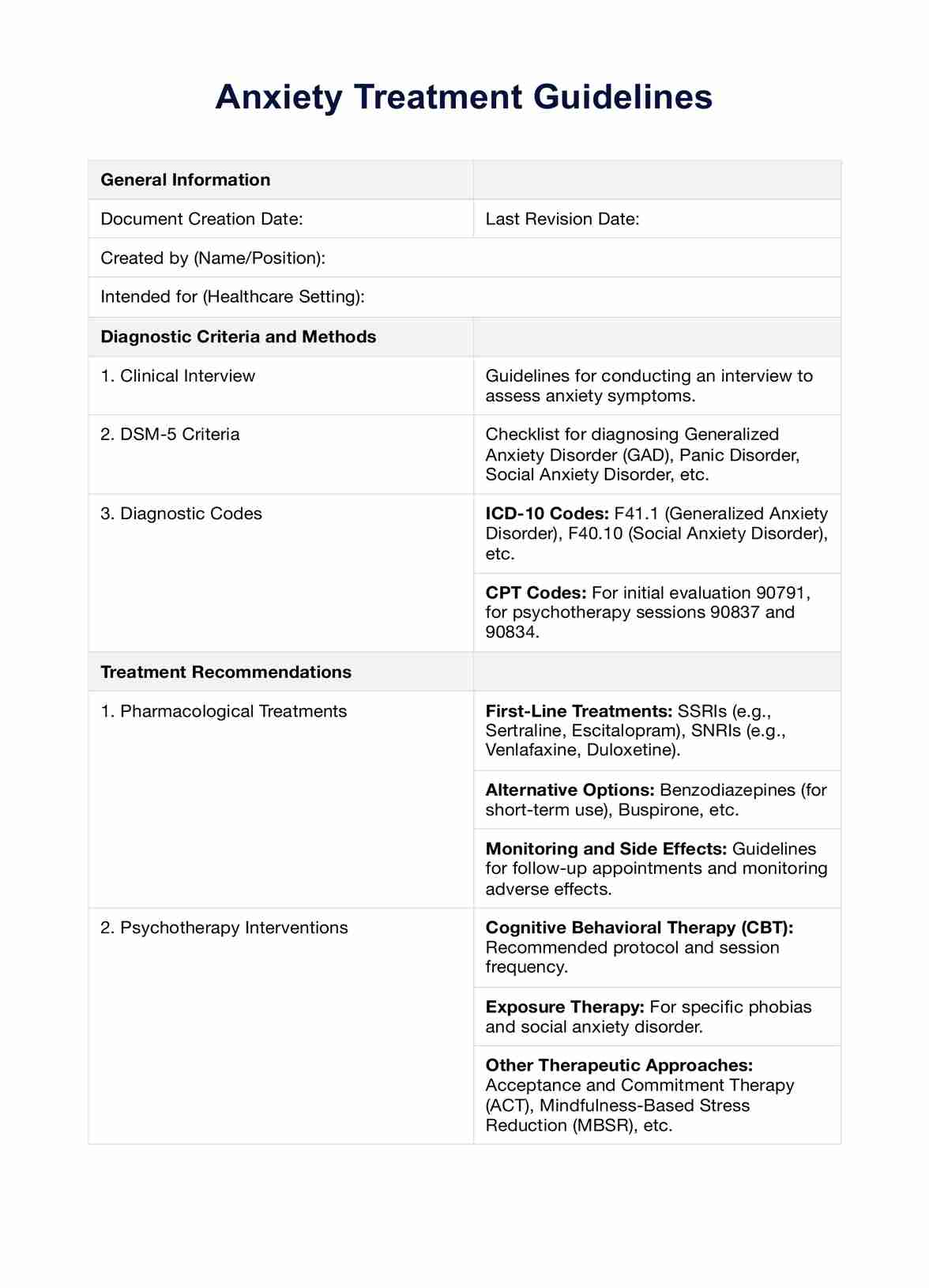
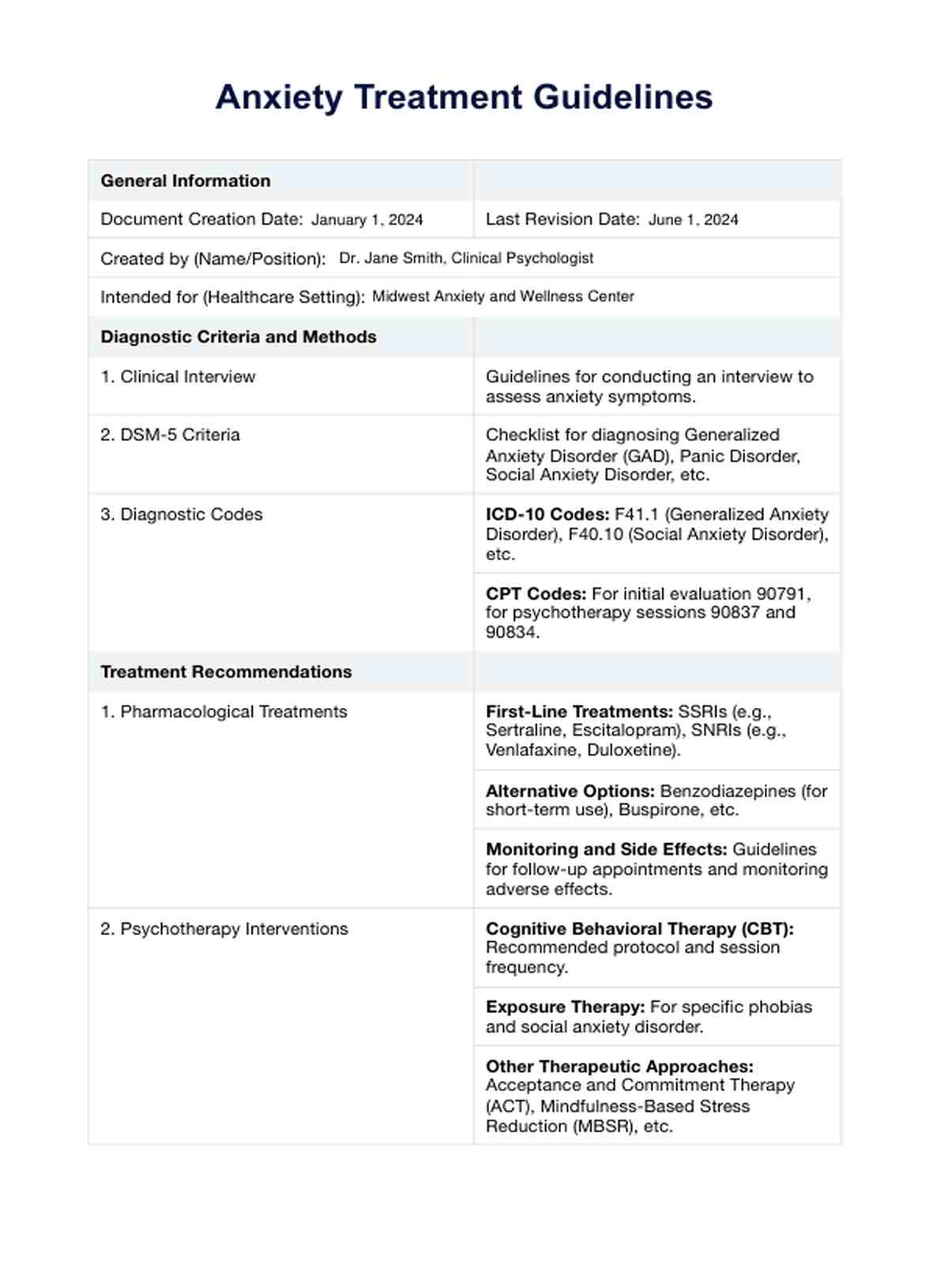

















-template.jpg)



















































































